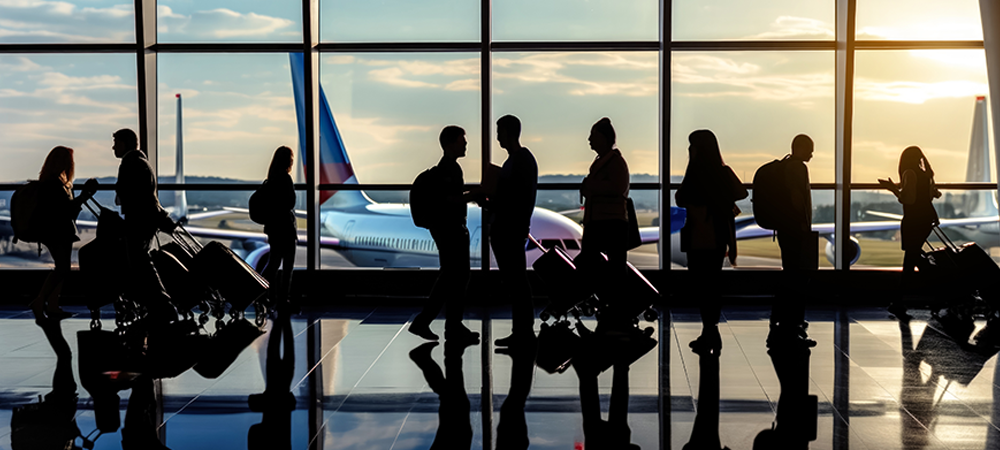SITA explores the shifting trends to update its innovation outlook for the next decade.
With the arrival of Generative AI in 2023, the technology has surged to the top of airport and airline agendas, with 97% of airlines planning a program to develop the technology.
This has taken the limelight away from the Metaverse, which was the focus for 2022.
Similarly, Urban Air Mobility has seen surging interest from airlines and airports, with the first flights due to take off in 2024.
As a result, investment in the space across all stakeholders (including OEM, infrastructure and systems) is projected to accelerate from $5 billion in 2022 to $28 billion in 2030.
These were some key findings of SITA’s updated Meet the Megatrends report, highlighting the industry’s rapidly changing innovation landscape.
The report examines 12 emerging technological, societal, traveler, and economic trends that will significantly morph the travel landscape by 2033.
While some megatrends identified in 2022 have witnessed rapid growth in the last 12 months, others also continued to develop, including Digital Travel, with the emergence of digital identities.
According to SITA’s 2023 Air Transport IT Insights, by the end of 2026, 82% of airlines will use biometric-enabled digital identity technologies for aircraft boarding, a further 67% confirmed using touchless and 50% single token.
2023’s meteoric rise of generative AI
New data from SITA’s 2023 IT Insights shows that 86% of airlines are collaborating with innovation partners to make advancements in AI, Machine Learning and computer vision – 39% of these have already been implemented, while another 47% confirmed plans by the end of 2026.
Only 3% of airlines stated having no plans to invest in AI technologies.
In comparison, 97% confirmed major programs and R&D.
Looking at airports, 16% of airports already use AI and ML for improved decision-making with another 51% confirming plans to implement such solutions by the end of 2026.
UAM’s rapid evolution
Increased demand for short-range routes, advances in batteries and electric propulsion systems and the increasing efforts to reduce aviation’s carbon footprint and operational costs have all contributed to the UAM transportation sector’s impressive growth in 2023.
Taking to the air rather than the road may soon be possible in Paris: an electric air taxi service is in the pipeline and could be launched during the 2024 Olympic Games.
Airlines show increased interest in UAM, with 32% confirming major programs and R&D in UAM services and infrastructure.
Thirty-three per cent 33% of airlines invest in VTOL integration technologies for airline operations.
UAM services and infrastructure are taking off for airports, with 32% confirming major programs and R&D on this front.
Furthermore, 57% of airports confirmed major programs and R&D plans for integrating intermodal transport systems for data sharing, with 26% investing in technologies for VTOL integration.
Patrik Svensson Gillstedt, Senior Vice President, Strategy and Growth Enablement, SITA, said: “It’s an exciting time for travel with new technologies transforming the industry at rates previously unseen. While AI is a key example of this, it’s encouraging to see other innovations like UAM, Digital Travel, and intermodal travel also gathering pace.
“At SITA, we have cultivated a more open approach to innovation jointly with our customers and industry groups to try many things to relieve difficult problems in agile-lean ways. Partnering with experts where we see a big opportunity, canvassing the imagination and talent of our employees across the entire organization, and drilling down into hyper-efficient models for validating ideas and nurturing them through the development cycle has been a focus for us.”
The report was spearheaded by the SITA Lab innovation team and draws upon insights from across the transport industry, SITA’s global research and the latest cutting-edge proof of concepts to identify the most powerful shifts that will drive the travel industry’s evolution by 2033.


